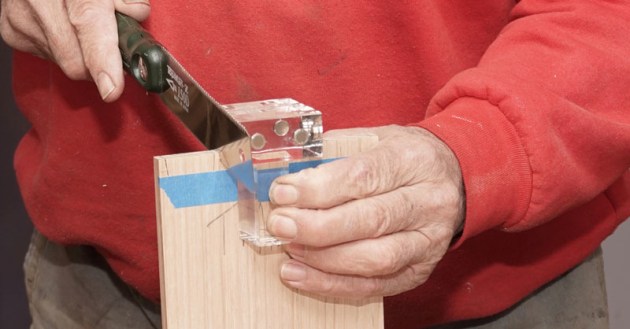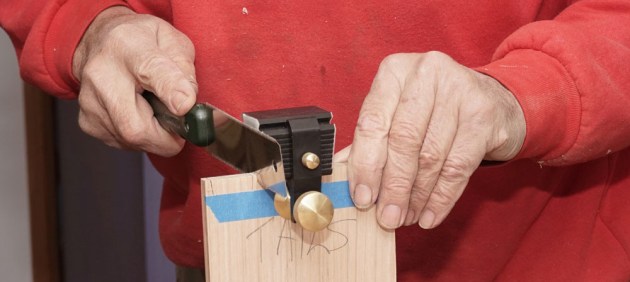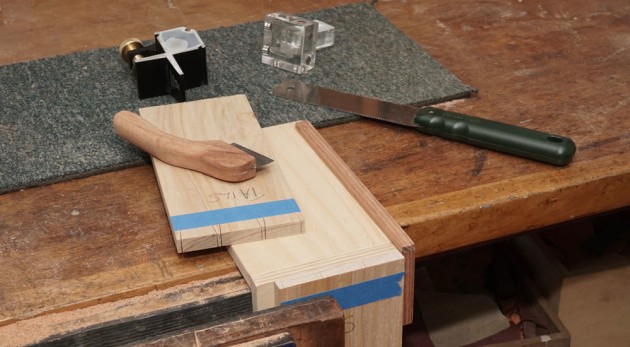Dovetail Guides: a test of two
Review and photos: Richard Vaughan
Dovetails tend to be a criterion by which a woodworker is judged and it does take a fair bit of practice to routinely get good results. For recreational woodworkers this can be a challenge that results in too much disappointment in an activity that should bring joy.
There are those who may dismiss magnetic dovetail saw guides as ‘cheating’, but I have to applaud a jig that enables excellent results for even complete beginners and encourages them to keep extending their repertoire. You can think of them as training wheels that alow muscle memory to develop.
I recently acquired two popular versions for my students to experience, although I don’t intend to substitute them for working on their unassisted hand skills during class time.
The Katz-Moses dovetail jig (photo 1) was ordered online from overseas while the Veritas guide (photo 2) was obtained locally from Carbatec. The high standard of manufacture of these jigs is really satisfying and both come with clear instructions.
It takes little practice to get a good sense of where to position the jigs to make a saw cut that needs no chisel work for a snug fit.
The primary difference is that the Veritas can be locked in position for both tails and pins whereas the Katz- Moses depends on being held, and as the surface is very smooth this is a bit of a knack, though not a write-off issue. Another minor inconvenience with the Katz-Moses is that the board needs to be reversed to cut the other angle of the tails and pins, unlike the Veritas.
Once the tails have been sawn and the pins marked both jigs enable accurate cutting of the pins, and this eliminates another chance for a sawcut that needs tuning.
Although the instructions recommend clearing the waste before marking out the pins, I favour using the kerf before clearing the waste as there is no chance of a slip away from, or into the tail, especially when cutting fine pins. I have made up a simple tool for this with a piece of extinct Japanese sawblade so a good fit in the kerf is guaranteed (photo 3).
I claim no credit for the jig also shown in photo 3 that makes accurately marking the pins from the tails easy – I came across it on YouTube but don’t recall where. It’s simple to make and highly recommended. Note the use of tape to make the gauge line clearer.
Cutting the shoulder at each end of the tails board is often a source of error but the Katz-Moses jig includes a guide for this. Veritas does have a separate jig for square vertical cuts but having it in the one tool is very convenient.
Another point of difference is that the Veritas jig is too tall for most dovetail saws that have a back and so requires
a backless version. However I found that my flush cut saw worked nicely. The Katz-Moses can be used with any dovetail saw but I have to say that a saw without set precludes the chance of damaging the jig.
Even though the shoulder cutting guide on the Katz-Moses is a big plus I tend to favour the way the Veritas can be locked in place, but both are very effective and the price difference is minor.
Richard Vaughan is a furniture designer maker who also teaches woodworking. See www.richardvaughan.com.au
Katz-Moses jig from www.katzmoseswoodworking.com Veritas dovetail guide from www.carbatec.com.au





